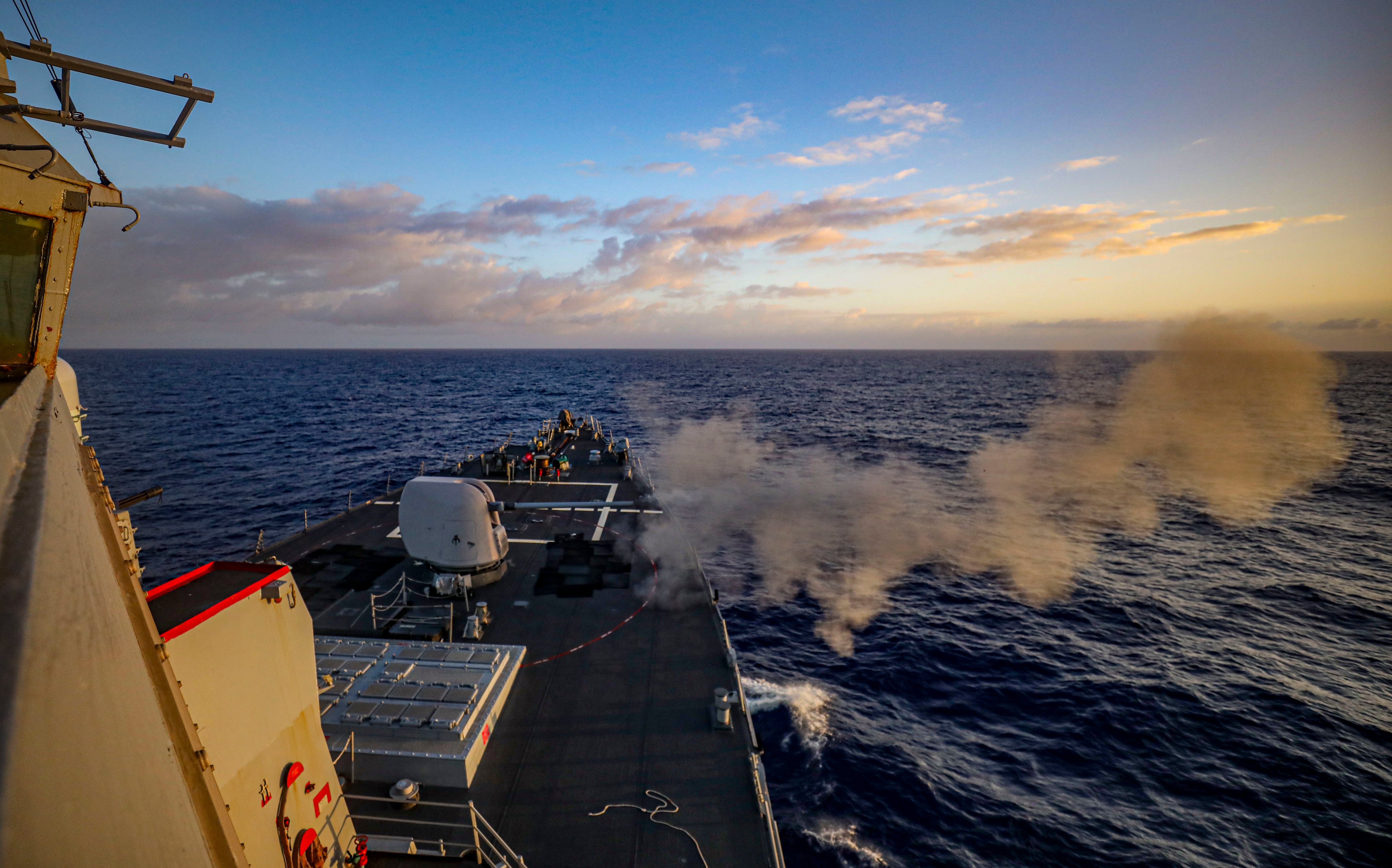BEIJING — U.S., Japanese, Australian and Canadian warships are currently staging extensive joint drills in Japanese and international waters, the U.S. Navy said Wednesday.
Without mentioning China directly, the 7th Fleet said the two-week biennial “Keen Sword” exercises include scenarios designed to “challenge the critical capabilities required to support the defense of Japan and stability of the Indo-Pacific region.”
Growing Chinese assertiveness is seen by the U.S. and its allies as the key military challenge in the region.
The drills also come as heads of the Group of 20 leading economies were meeting in Indonesia, among other high-profile regional forums.
The G-20 gathering allowed the first face-to-face meeting between U.S. President Joe Biden and China’s Xi Jinping since Biden took office, leading to hopes of a start of a reduction of tensions that have lately spiked over trade, technology and Taiwan.

The drills include extensive anti-submarine warfare drills, and the guided-missile destroyer Benfold fired its 5-inch gun on Sunday as part of live-firing exercises, the 7th fleet said in a statement. Three Japanese destroyers, two Canadian frigates and one Australian destroyer also took part, it said.
Participation by the Australian and Canadian navies this year helped “enhance readiness and interoperability to support the security interests of allies and partners in the region,” it said.
“Regional security is a team effort now more than ever,” Cmdr. Marcus Seeger, commanding officer of the Benfold, said in the statement. “We share a sense of collective resolve. The first wave of crisis response will share the same allies present in this year’s Keen Sword.”
China has the world’s largest navy by number of ships, which it has been using to assert its claim to virtually the entire South China Sea, a crucial route for global trade.
China has eschewed formal alliances but has taken part in some multinational drills on a very limited level. It has established its first overseas base in the Horn of Africa nation of Djibouti and is believed to be working with Cambodia on establishing another such facility facing the Gulf of Thailand. Both countries have denied the allegation.
China has also signed a security agreement with Solomon Islands, raising concerns that Chinese forces will gain a foothold in the South Pacific.
Mutual exchanges between China and the U.S. have been especially tricky for reasons including deep mutual suspicion and Washington’s support for Taiwan, which China claims as its own territory to be brought under its control by force if necessary.
China reacts strongly when the U.S. sails naval ships close to Chinese-held islands in the South China Sea, many of which Beijing has equipped with landing strips and other military facilities.
Attempts to implement agreements on avoiding unexpected incidents at sea and in the air have had limited success, and the U.S. disinvited China from a major biennial exercise known as Rim of the Pacific because of the militarization of its South China Sea islands.



